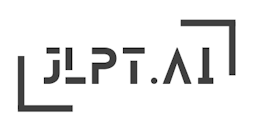

N2
音読み:shi
訓読み:shirusu
シshi
しるすshirusu
Magazine, record, write
Imagine a person writing down their thoughts and ideas in a journal. The strokes of the kanji '誌' represent the record and documentation of information, symbolizing the act of writing.
The kanji '誌' is a Level N2 kanji, which means it is expected to be known by intermediate learners. It may appear in reading comprehension, vocabulary, or kanji-related questions on the JLPT N2 exam.
彼は学術誌に論文を投稿しました。
He submitted a paper to an academic journal.
かれはがくじゅつしにろんぶんをとうこうしました。
Kare wa gakujutsu-shi ni ronbun o toukou shimashita.
この誌面には多くの様々な記事が掲載されています。
This magazine features a wide variety of articles.
このしめんにはおおくのさまざまなきじがけいさいされています。
Kono shimmen ni wa ooku no samazamana kiji ga keisai sareteimasu.
彼は映画誌の記者として働いています。
He works as a journalist for a film magazine.
かれはえいがしのきしゃとしてはたらいています。
Kare wa eigashi no kisha toshite hataraitteimasu.